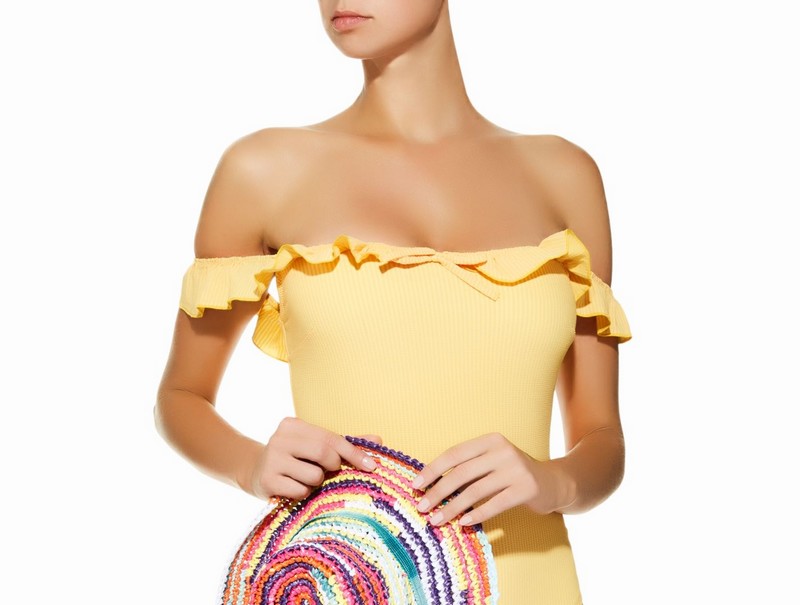Fashion delights in new ways to wear old things. This is how the trainer ended up on the front row, how the Ikea Frakta bag went from the car boot to the catwalk and how slip dresses slipped into Céline’s spring 2016 collection.
But rarely does it encourage you to extend the wear of things you already own. Still, these are desperate times. We can’t and shouldn’t keep buying new clothes simply because of the weather. And if last weekend’s rain brought with it a mix of flooding and respite from the heat, it also bought us time to gear up for the second wave. Because a new reign of hot terror is coming! And this time we need to be prepared – so get ready to wear your swimsuit as daywear.

Unpacking this trend, which you may be doing if you are on holiday, is simpler than it sounds. For one, a swimsuit is designed to be both wet and dry, which is good for the hot human body since most don’t show up sweat. And while this is not a trend for the office, the headline is misleadingly daft: fashion writers talk about day-to-night dressing (how to dress for a temperature drop without bringing a whole extra outfit to work) a lot. Amphibious dressing is simply beach-to-street dressing.
The roll call of evidence is already pretty convincing. Topshop suggests you wear its textured swimsuits “beyond the beach”. Cossie + Co, a new brand that sells proper one-piece swimsuits in grown-up colours, are also “not reserved for the beach”. Zara, meanwhile, has styled a white swimsuit with a pencil skirt fit for the boardroom.
A recent image of Julie Pelipas, fashion director of Vogue Ukraine, wearing a “swimsuit-like top” and loose trousers was declared “the most perfect outfit of the summer” by the fashion blog Man Repeller. In a recent article, the New York Times suggested pairing the bestselling swimsuit from a new collaboration between Staud and Solid & Striped with Levi’s jeans. And then there’s Alexa Chung, who posted a swimsuit-and-denim skirt selfie last Friday on Instagram Stories with the caption: “Swimwear as workwear was the only option.” When something becomes normalised by Chung, it is usually here to stay.

Perhaps we could have seen it coming after Marni “superimposed” a swimsuit shape on to a dress in its current collection. And we have certainly seen a version of this before, with underwear worn as outerwear, a trend explored by Rihanna and Beyoncé that has become so pervasive it now has its own Wikipedia page. Wearing your swimsuit as a top is probably an extension of this.
If the idea of wearing a swimsuit to the shops sounds absurd, then you might want to rethink your swimsuit. There’s no reason you can’t wear a bra under some brands, although many have some inbuilt support. And many swimsuits – including Topshop’s tangerine ribbed one-piece, which is trending this week, and Hunza G’s – are made from a textured, thicker seersucker fabric. This is “ more durable than some of the basics you get on the high street” says Georgiana Huddart, Hunza G’s creative director.

Huddart says she has seen the firm’s swimsuits “take on a diverse new role – worn as much off the beach as on”. Natascha Wittgenstein, founder of new Swedish brand Tooshie, concurs (although she prefers the word “multitaskers” when talking about wearing hers out at night). Still, they agree this is an era of textured swimsuits. As Huddart says: “A swimsuit no longer means just that.”
These are weird times for swimsuits. While Love Island messed with their very essence (contestants’ swimsuits this year had enough cut-outs to trigger trypophobia), the one-piece recently came under scrutiny after the Miss America pageant announced it will eliminate one of the most contentious aspects of the competition: the swimsuit round.
If underwear continues to be a battleground about primal sexuality, then it’s time for swimwear to take on a new role.
guardian.co.uk © Guardian News & Media Limited 2010
Published via the Guardian News Feed plugin for WordPress.


